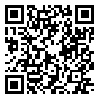Volume 1, Issue 1 (2014)
QHTS 2014, 1(1): 23-46 |
Back to browse issues page
1- PhD student in Arabic Language and Literature, Ferdowsi University of Mashhad, Iran.
2- Professor of Arabic language and literature, Ferdowsi University of Mashhad
3- Assistant Professor of Arabic language and literature, Ferdowsi University of Mashhad.
2- Professor of Arabic language and literature, Ferdowsi University of Mashhad
3- Assistant Professor of Arabic language and literature, Ferdowsi University of Mashhad.
Abstract: (17290 Views)
The present article seeks to explain the position of the word "Righteousness" by the method of descriptive semantics. After the etymology, its semantic relation with collecative and substitute words has been examined in the Qur'an. Therefore, according to the research features, descriptive analysis method has been used. The results of descriptive study showed that “Righteousness” in spiritual application based on substitutional orientation or collecation orientation has semantic relation with the words like “piety”, “faith”, “charitable”, “forgiveness”, “honesty”, “better” and “goodness”. Based on collecation orientation with words, it is located in a semantic field such as misconduct, tyrant, miserable, rebellious, disobedience, iniquity, aggression, sin, and bad, and in some semantic components, it has contrastive meaning with them. Another important result, is the deep semantic relation of “righteousness” with other words in the same field in the Holy Qur'an. These relationships have caused the word “righteousness” to be impressed by the adjacent words and the meaning system placing in it, such that it survives with distinct and transcendental meaning. The word “righteousness”, as the most general moral concept, has a literal meaning of "development of good work", and its conceptual and applicable scope is very wide, which can be summed up in the three semantic aspects of "obedience", "goodness " and "piety".
Keywords: The Holy Qur'an, Righteousness, Descriptive semantics, Semantic relationship, The Holy Qur'an, Righteousness, Descriptive semantics, Semantic relation
Received: 2014/07/22 | Accepted: 2015/01/21 | Published: 2015/02/10
| Rights and permissions | |
 |
This work is licensed under a Creative Commons Attribution-NonCommercial 4.0 International License. |



